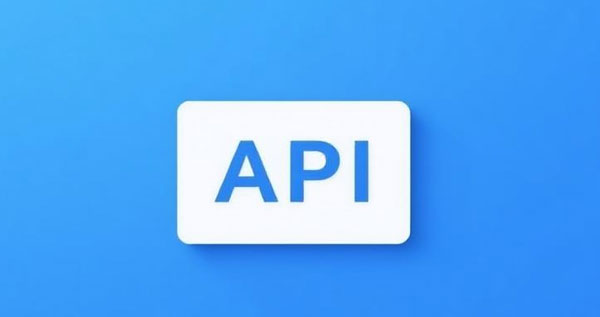Build Your Financial Data System from Scratch: Bring the Financial World into Your Local Project via API
In the highly information-dense world of financial markets, data has become the most valuable asset for investors and analysts. From daily stock quotes, company announcements, to complex financial statements, lacking a reliable and efficient system to collect and process this data is akin to “feeling an elephant in the dark”—you simply can’t see the whole picture.
In the past, many people managed financial data manually—copy-pasting into Excel or scraping websites. These methods are not only inefficient but also highly error-prone. Today, with the widespread adoption of API (Application Programming Interface) technology, especially in the realm of FinTech, there's a far more elegant solution—leveraging financial data APIs to synchronize your projects with the market in real time.
This article walks you through how to build a personal or small team financial data collection system from scratch, with a real-world example: using Luckdata’s Yahu Financials API to fetch real-time stock data and create your first financial database.
Why Build Your Own Financial Data System?
Whether you’re a beginner just starting to invest or an analyst at a financial firm, you’re likely to encounter these common challenges:
Fragmented Data Sources: Quotes, news, and reports are scattered across different platforms.
Delayed Information: Traditional finance portals often lag behind the real market movements.
Unstructured Data: Public data usually comes in webpage formats, difficult to parse directly.
Lack of Automation: Manual operations can't meet the need for scheduled tasks or algorithmic strategies.
The best way to overcome these problems is by accessing financial APIs, which provide clean, structured data directly from the source and integrate seamlessly into your workflows.
Data Source Comparison: Traditional Methods vs. API
Let’s quickly compare traditional data collection methods and API-based access:
Feature | Web Scraping | Financial Data API |
|---|---|---|
Data Stability | Breaks when page structure changes | Maintained and stable over time |
Learning Curve | Requires HTML and DOM knowledge | Simple HTTP requests |
Data Format | Unstructured, needs parsing | Ready-to-use JSON format |
Real-Time Access | Significant delays | Real-time or near real-time |
Automation Support | Hard to integrate | Easily scriptable |
If you want to bring financial data into your analytical tools, alert systems, or investment models, using APIs is the only sustainable solution.
Project Goal: Fetch Real-Time U.S. Stock Prices via API and Save to a Local Database
In this project, we aim to:
Retrieve real-time stock quotes (price, time) for several U.S. stocks via API.
Store the data in a local SQLite database for future analysis.
Provide flexibility for future enhancements like automated updates or custom alerts.
This is your starting point for building a larger-scale financial analytics system or data dashboard.
Choosing the API: Luckdata’s Yahu Financials API
Among many available options, Luckdata’s Yahu Financials API stands out as an easy-to-use and feature-rich platform. Key advantages include:
Comprehensive data coverage: Real-time quotes, stock fundamentals, news, screeners, conversation insights, and more.
Clean and consistent response: All data is returned in JSON format.
Developer-friendly: Comes with code samples in multiple languages including Python and JavaScript.
Generous free plan: Up to 500 API calls per day, sufficient for personal use or small-scale projects.
For this guide, we’ll use the market/quotes endpoint to get live stock prices and timestamps for selected tickers.
Hands-On: Fetching Stock Quotes and Saving to SQLite
Here’s a complete Python script that fetches live stock quotes for AAPL, GOOG, and TSLA, and saves them to a local SQLite database:
import requestsimport sqlite3
from datetime import datetime
# 1. Initialize SQLite database
conn = sqlite3.connect('quotes.db')
cursor = conn.cursor()
cursor.execute('''
CREATE TABLE IF NOT EXISTS quotes (
symbol TEXT,
price REAL,
time TEXT
)
''')
conn.commit()
# 2. Set up API request
headers = {
'X-Luckdata-Api-Key': 'your-luckdata-key' # Replace with your actual API key
}
symbols = 'AAPL,GOOG,TSLA'
url = f'https://luckdata.io/api/yahu-financials/0h6ilfhtvlta?region=US&symbols={symbols}'
response = requests.get(url, headers=headers)
data = response.json()
# 3. Insert data into the database
for quote in data.get('quotes', []):
symbol = quote.get('symbol')
price = quote.get('regularMarketPrice')
timestamp = quote.get('regularMarketTime')
readable_time = datetime.fromtimestamp(timestamp).isoformat()
cursor.execute(
'INSERT INTO quotes (symbol, price, time) VALUES (?, ?, ?)',
(symbol, price, readable_time)
)
conn.commit()
conn.close()
After running the script, your quotes.db file will contain the latest stock prices. You can then use tools like Excel Power Query, Python’s matplotlib, or pandas to analyze and visualize the data.
Suggestions for Expansion: Toward a Full-Fledged Automated Data Platform
Once your basic system is working, consider scaling it with the following features:
Add a scheduler (e.g.,
scheduleorAPScheduler) to fetch data hourly or daily.Expand the stock list to cover your personal watchlist or entire sectors.
Use
market/moversto monitor top gainers and losers.Incorporate
newsdata to build a live news dashboard for your portfolio.Use the
screenerendpoint to identify undervalued stocks based on financial metrics like low P/E or high ROE.Integrate with visualization frameworks like Streamlit, Dash, or embed insights into internal dashboards.
All of this can be accomplished simply by invoking different API endpoints—no more writing complex web scrapers or dealing with messy data structures.
Conclusion
The financial world is rapidly digitizing around APIs. For every investor, analyst, or developer, having a customized financial data system is no longer a luxury—it’s a necessity.
Yahu Financials API provides a developer-friendly gateway to real-time financial data. Whether you’re building a simple quote monitor or a robust quantitative model, it can serve as a reliable data backbone.
Ready to get started? Head over to Luckdata’s website, apply for your API key, and build your first data-driven financial app.
Data drives decisions. Decisions drive outcomes. Use data to make better investments.




